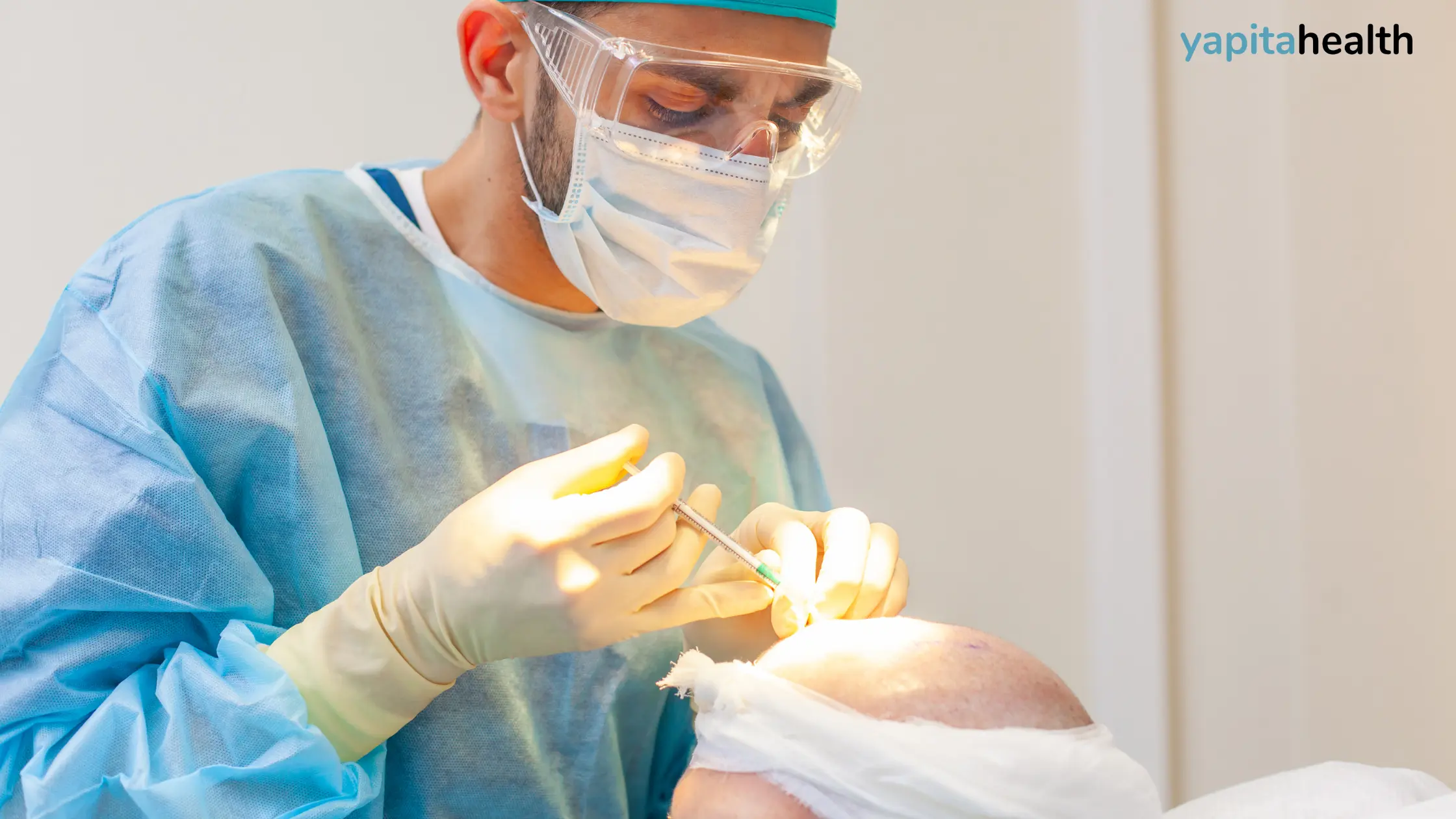10+ Side effects of Hair transplants - Complete Guide to the Downside of Hair Transformation
Hair transplants have become a popular solution for individuals looking to restore their natural hairline and combat hair loss. While the procedure is generally considered safe and effective, it's essential to be aware of possible side effects.
Hair transplant is a beacon of hope for those dealing with severe hair loss, offering a permanent solution to restore a natural hairline. While the procedure is generally safe and effective, prospective candidates need to be well-informed about potential side effects.
In the following sections, we will share the different side effects of hair transplants (no matter if you get FUE, DHI or FUT). We will also explain the steps you can take to manage these side effects.
While hair transplants are generally safe and well-tolerated, it's crucial for individuals considering the procedure to be informed about potential side effects.
Choosing a qualified and experienced surgeon, following postoperative care instructions diligently, and having realistic expectations are essential steps for a successful outcome.
The vast majority of patients experience positive results and an improved sense of confidence and well-being after undergoing a hair transplant.
Why Does it Happen & How Can You Avoid Side Effects?

So you're planning on getting a hair transplant soon, but reading various patient reviews has you confused. Thinking if you should get it done or not - well, there are side effects of drinking too much water! The magic is in doing things right - just how you must choose the right surgeon and clinic to get your surgery done.
Here are some ways you can avoid side effects, illustrated below:
- Choose a qualified surgeon and clinic
This is crucial for getting the best results with hair transplant surgery. You must avoid hair mills and instead choose a board-certified dermatologist with experience in FUT, FUE and DHI. Clinics or surgeons who keep things transparent are the green flags you should choose. Think before and after pictures, patient reviews and proper certifications.
- Follow your surgeon's instructions before surgery
You will receive comprehensive instructions before the surgery that you must follow to ensure it goes smoothly. This is what pre-surgery precautions look like:
i. Avoiding smoking and alcohol, as they slow healing
ii. Do not consume blood thinners like NSAIDs or Aspirin as they increase the risk of bleeding
iii. Avoid consuming herbal supplements, as they can cause bleeding.
iv. Stay hydrated and eat a well-balanced meal with a protein-rich diet.
- Take post-surgery care seriously
Just as pre-surgery care is important, post-surgery care plays an important role in the entire healing process. Common side effects that you may encounter include swelling, crusting, infection, itching, shock loss and numbness. Here's how you can handle them:
| Side Effect | How to Avoid |
|---|---|
| Swelling (Forehead/Eyes) | Sleep at 45° angle for 3-4 days. Use cold compresses. |
| Scabbing/Crusting | Gently wash scalp after 48 hrs (as per surgeon’s advice). |
| Infection | Take prescribed antibiotics, avoid touching grafts. |
| Shock Loss (Temporary shedding) | Normal, but minoxidil/finasteride (if prescribed) helps. |
| Itching | Use saline spray (no scratching!). |
| Numbness | Usually fades in weeks; massage scalp gently after healing. |
10 Potential Side Effects of Hair Transplants & Management Tips
Find out the top side effects and ways to handle them:
1. Immediate Postoperative Effects
Swelling and Redness:
-
Normal Response: Swelling and redness are common immediately after the surgery.
-
Resolution: Typically reduces within a few days with proper care.
2. Discomfort and Itching
-
Expected: Patients may experience mild discomfort and itching as part of the healing process.
-
Management: Pain medication and prescribed ointments can relieve these sensations.
3. Shock Loss
Temporary Shedding:
-
Part of the Process: Shock loss refers to the temporary shedding of existing hair in the recipient area.
-
Temporary Nature: This is a normal part of the hair growth cycle and is usually temporary.
4. Infection Risk
Rare, but Possible:
-
Preventive Measures: Following postoperative care instructions, including proper scalp cleaning, significantly reduces the risk of infection.
-
Prompt Attention: Any signs of infection should be promptly addressed with a healthcare professional.
5. Scarring
Minimized with Advanced Techniques:
-
Modern Techniques: FUE minimizes visible scarring compared to the linear scars associated with FUT.
-
Individual Variability: Scarring can vary based on individual healing responses.
6. Numbness and Tingling
Temporary Nerve Sensation Changes:
-
Common: Numbness or tingling may occur due to nerve involvement during surgery.
-
Temporary Nature: These sensations are typically temporary and improve as nerves heal.
7. Cysts
Infrequent Occurrence:
-
Rare: Formation of cysts at the transplant site is rare.
-
Soothing Nature: If present, cysts are usually harmless and can be drained if necessary.
8. Unnatural Appearance
Avoided with Skilled Surgeons:
-
Expertise Matters: Inexperienced surgeons may create an unnatural appearance.
-
Choosing Wisely: Opting for a skilled and reputable surgeon minimizes the risk of an unnatural outcome.
9. Persistent Itching or Discomfort
Temporary Issue:
-
Expected: Some patients may experience persistent itching or discomfort during the healing process.
-
Management: Sticking to postoperative care instructions and using recommended products can alleviate these symptoms.
10. Uneven Hair Growth
Potential Challenge:
-
Complexity: Achieving perfectly even hair growth can be challenging.
-
Refinement Options: Touch-up procedures may be necessary for betterment and optimization.
11. Delayed Growth or Poor Growth
Patient-Specific Response:
-
Variability: Hair growth rates can vary among individuals.
-
Patience is Key: Final results may take up to a year, and patience is crucial.
End Note
While potential side effects exist, it's important to underline that hair transplants have transformed the lives of countless individuals by providing a lasting solution to hair loss. Choosing a qualified surgeon, following postoperative care instructions, and maintaining realistic expectations are key factors in achieving successful outcomes.
The majority of patients experience positive results, enjoying not just a fuller head of hair but also enhanced confidence and well-being.
Individual responses to the procedure can vary, and any concerns or unexpected symptoms should be promptly addressed with the medical professional overseeing the treatment.
With proper guidance and care, a hair transplant can be a transformative journey toward reclaiming a natural and confident appearance.
Get A Cost Estimate
Hair transplant FUE cost
Get A Cost Estimate
Hair transplant FUE cost

